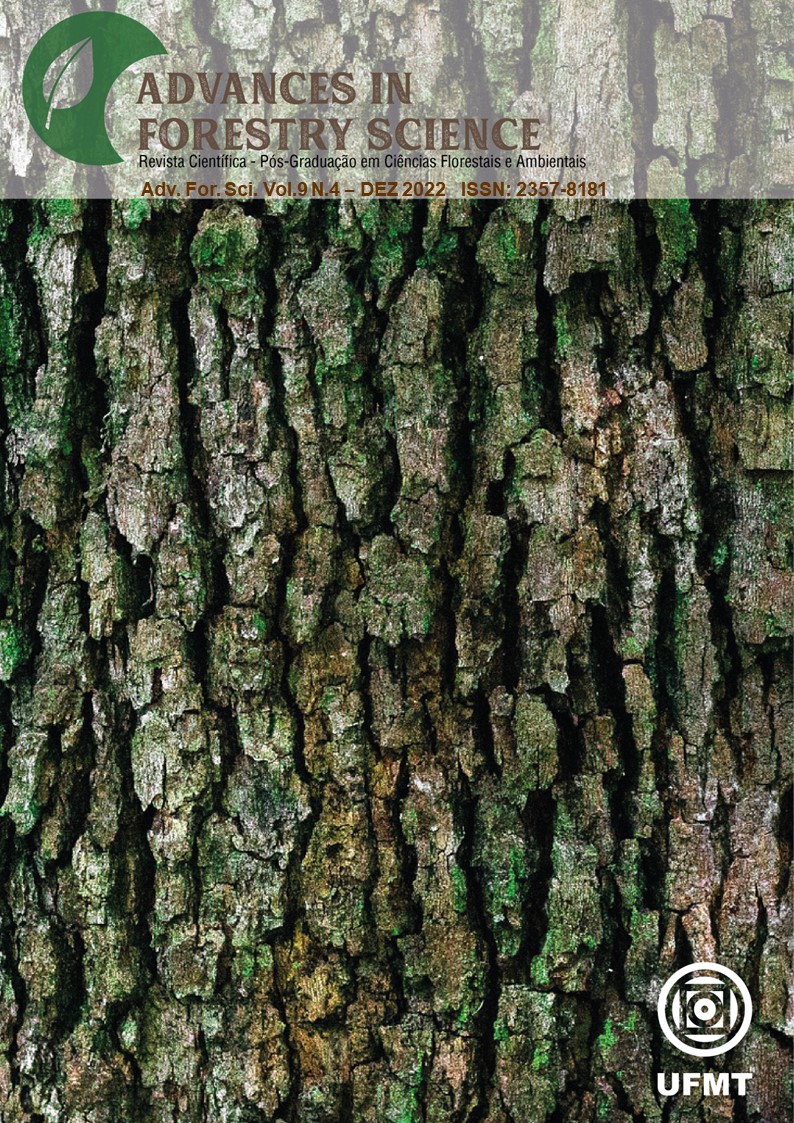Relative importance of predictor variables in the forest productivity modeling
DOI:
https://doi.org/10.34062/afs.v9i4.13519Abstract
Modeling forest growth and production is a major challenge for forest managers due to the large number of variables involved and the importance of the generated estimates for decision making in the forestry enterprise. Several statistical and artificial intelligence methods can be used to verify the importance of variables and their selection for the forest modeling process. This study demonstrates the use of the perturbation method in defining the relative importance of predictor variables (silvicultural, climatic and management) in predicting the productivity of eucalyptus stands at the end of the rotation. Data from 320 eucalyptus plantations located in the north of the State of Minas Gerais, aged over seven years, were used. Precipitation distributed at different ages and soil clay content were the most important variables for the prediction of volume at cutting age.
Downloads
Downloads
Published
Issue
Section
License
All copyright must be assigned to the Federal University of Mato Grosso.

